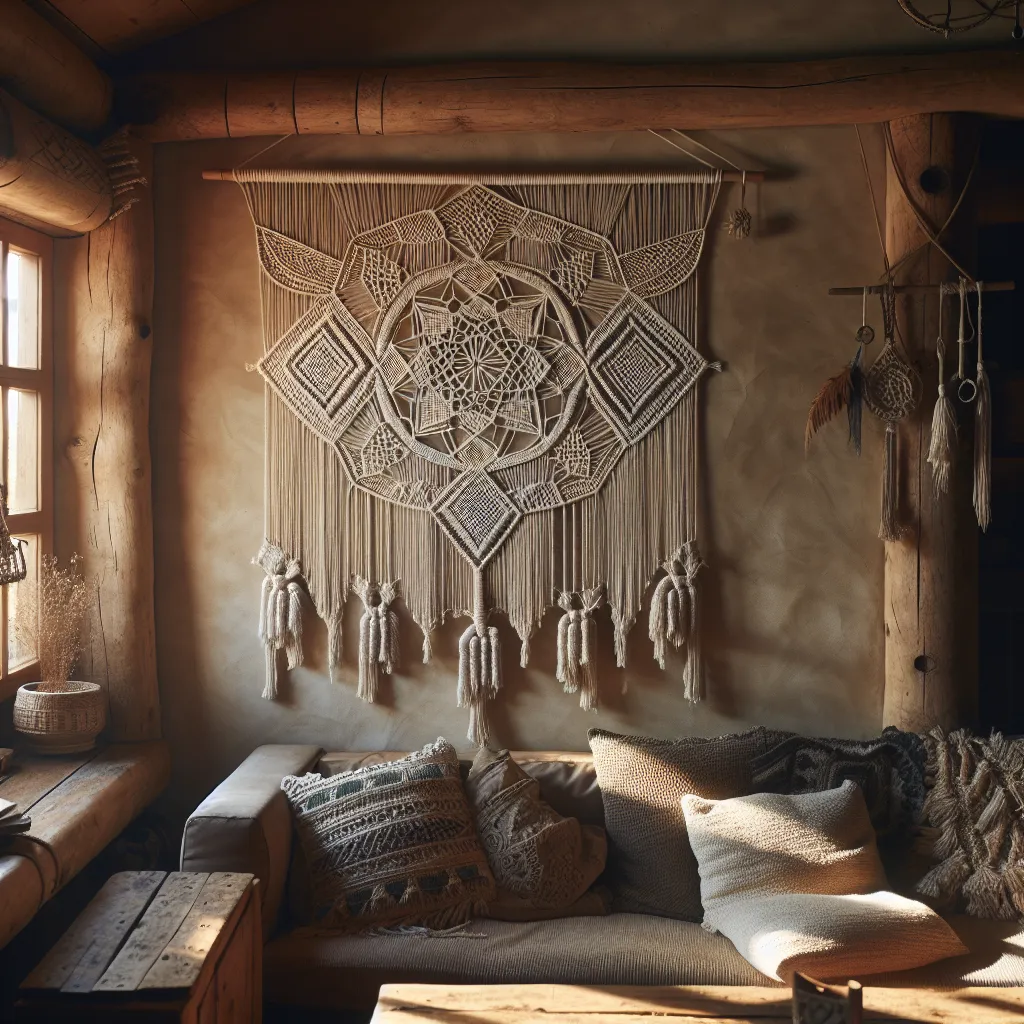History of Macramé Wall Hangings
Macramé wall hangings have a rich history that dates back to the 13th century when Arabic weavers started using intricate knotting techniques to create stunning textiles. This art form spread to Europe in the 14th century through Moorish conquests, where it gained popularity as a way to embellish clothing, curtains, and tapestries. However, it wasn’t until the 1970s that macramé wall hangings became a prominent decor trend in the United States and Western Europe.
During the 1970s, macramé enjoyed a surge in popularity as a craft form, with individuals creating intricate wall hangings using various knotting techniques. These hand-crafted pieces became a symbol of the era’s bohemian lifestyle and were often displayed in homes as a form of artistic expression.
In recent years, there has been a resurgence of interest in macramé wall hangings as people seek to incorporate handmade and artisanal elements into their decor. The versatility of macramé allows for a wide range of designs, from simple and minimalist to intricate and elaborate, making it a popular choice for modern interior design.
Today, macramé wall hangings continue to be a stylish and timeless decor craft project, adding a touch of artistry and texture to any living space. The history of macramé wall hangings reflects the enduring appeal of this ancient craft in contemporary design trends.
Techniques and Materials for Handmade Macramé Creations
Handmade macramé wall hangings have become extremely popular as stylish decor craft projects. Creating beautiful macramé pieces involves using specific techniques and materials to achieve stunning results. The art of macramé involves various knots and weaving techniques, and the choice of materials plays a crucial role in the overall aesthetic and durability of the final creation.
One of the most common techniques used in macramé is the square knot, which forms the foundation of many macramé patterns. This basic knot is created by overlapping and crossing two sets of cords, resulting in a distinct square shape. Additionally, the half hitch knot and the double half hitch knot are often used to create intricate patterns and designs in macramé projects.
When it comes to materials, high-quality cord is essential for creating durable and visually appealing macramé wall hangings. Natural materials such as cotton, linen, and jute are popular choices due to their versatility and aesthetic appeal. Different types of cord offer varying textures and finishes, allowing for creativity and customization in macramé creations.
Furthermore, the incorporation of additional elements like wooden dowels, beads, and feathers can add depth and visual interest to macramé designs. These materials not only enhance the overall appearance of the wall hanging but also provide opportunities for personalization and style.
In conclusion, mastering various macramé techniques and selecting the right materials are pivotal in the creation of handmade macramé wall hangings. The interplay between different knots and the choice of cord and embellishments contribute to the distinctive beauty of each macramé creation, making it a truly unique and stylish decor craft project.
DIY Guide to Creating Your Own Macramé Wall Hanging
Sure, here’s a paragraph for your article:
Creating your own macramé wall hanging can be a rewarding and stylish DIY project. To begin, gather your materials, including a wooden dowel or metal ring, cotton cord, and scissors. Start by cutting the cord into equal lengths and attaching them to the dowel using various macramé knots, such as the square knot or half-hitch knot. As you work, consider the design and pattern you want to achieve, whether it’s a simple geometric arrangement or a more intricate bohemian-inspired style. Feel free to add embellishments like wooden beads or dyed fringe to personalize your creation. With a bit of patience and creativity, you can craft a beautiful macramé wall hanging that adds a touch of handmade charm to any space.
Styling Tips for Incorporating Macramé into Your Home Decor
Macramé wall hangings have become a popular choice for adding a touch of bohemian style to home decor. With their intricate designs and natural textures, these handmade pieces offer a stylish and unique way to elevate the look of any room. If you’re looking to incorporate macramé into your home decor, here are some styling tips to help you make the most of this trendy craft project.
First, consider the placement of your macramé wall hanging. These pieces work well as a focal point in any room, so choose a spot where it can stand out, such as above a bed, sofa, or mantel. The intricate knots and flowing fringe of a macramé piece can create a stunning visual impact, so be sure to give it the attention it deserves.
Next, think about the overall aesthetic of the room and how the macramé piece fits into it. Whether your decor leans more towards modern, bohemian, or eclectic, there’s a macramé style to suit every taste. For a modern look, opt for a sleek and simple macramé design, while a more intricate piece can add a bohemian or vintage vibe to the space.
Furthermore, consider pairing your macramé wall hanging with other decor elements to create a cohesive look. Incorporating natural materials like wood, rattan, or jute can complement the organic feel of macramé and enhance its visual appeal. Additionally, adding greenery or botanical elements around the macramé can further enhance its bohemian charm.
Lastly, don’t be afraid to mix and match different textures and patterns to create visual interest. Consider layering your macramé with other wall art or textiles to add depth to the overall decor scheme. Experiment with different combinations until you find a look that resonates with your personal style and complements the space.
Incorporating macramé into your home decor is a stylish way to add a touch of handmade charm and bohemian flair to any room. By considering the placement, overall aesthetic, complementary decor elements, and mixing textures, you can effortlessly elevate your home decor with a beautiful macramé wall hanging.




